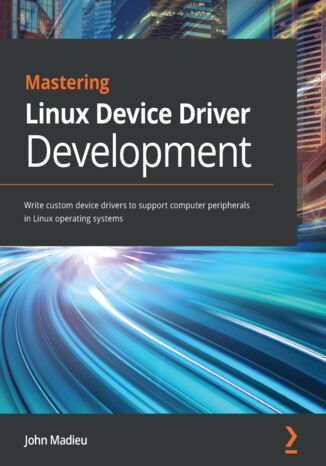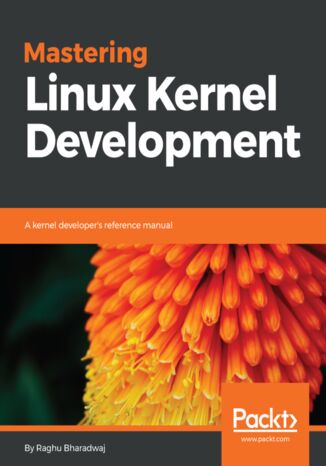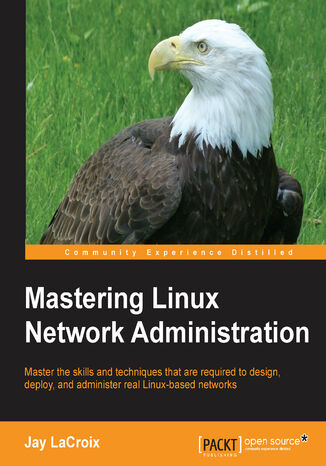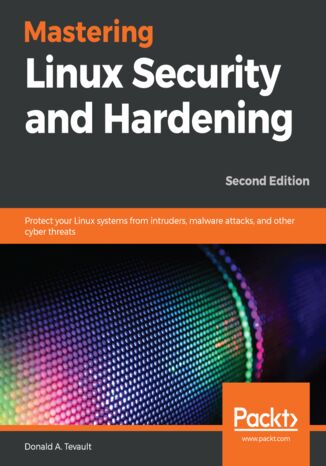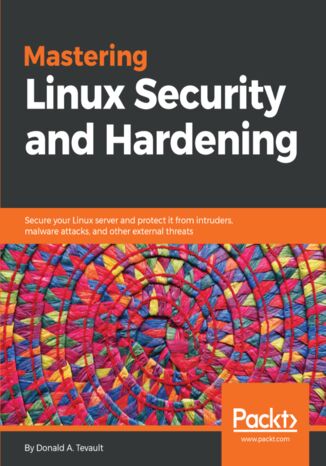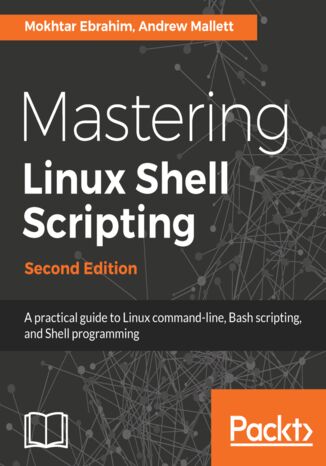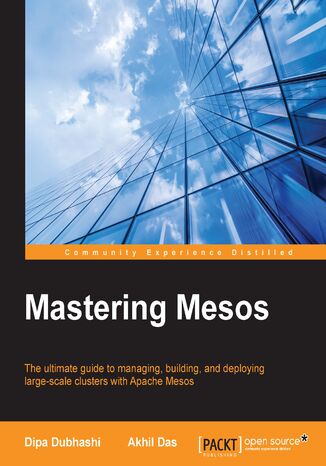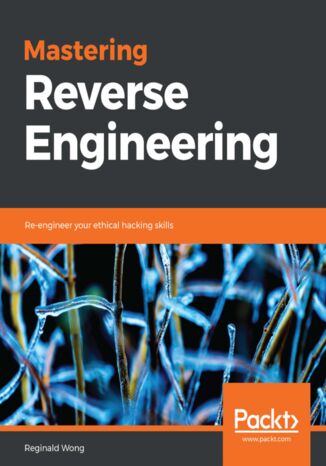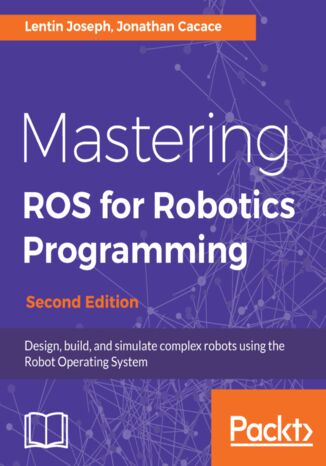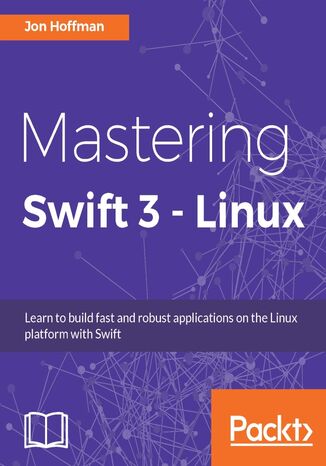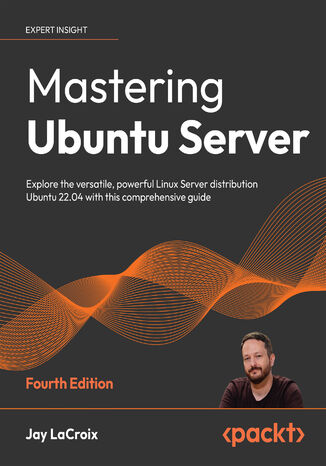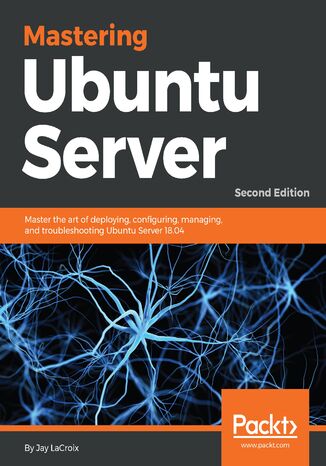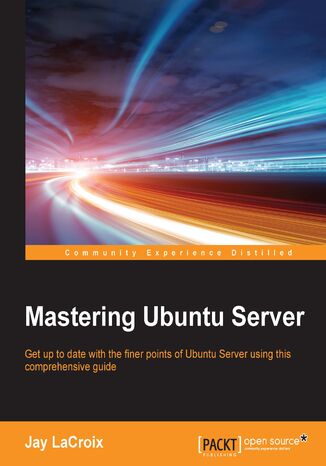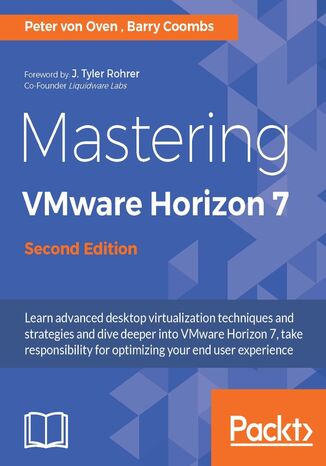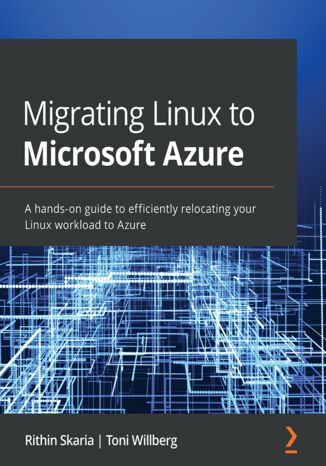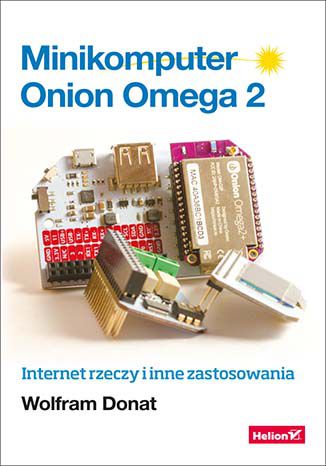Kategorien
E-Books
-
Wirtschaft
- Bitcoin
- Geschäftsfrau
- Coaching
- Controlling
- E-Business
- Ökonomie
- Finanzen
- Börse und Investitionen
- Persönliche Kompetenzen
- Computer im Büro
- Kommunikation und Verhandlungen
- Kleines Unternehmen
- Marketing
- Motivation
- Multimedia-Training
- Immobilien
- Überzeugung und NLP
- Steuern
- Sozialpolitik
- Handbȕcher
- Präsentationen
- Führung
- Public Relation
- Berichte, Analysen
- Geheimnis
- Social Media
- Verkauf
- Start-up
- Ihre Karriere
- Management
- Projektmanagement
- Personal (HR)
-
Für Kinder
-
Für Jugendliche
-
Bildung
-
Enzyklopädien, Wörterbücher
-
E-Presse
- Architektura i wnętrza
- Biznes i Ekonomia
- Haus und Garten
- E-Business
- Finanzen
- Persönliche Finanzen
- Unternehmen
- Fotografie
- Informatik
- HR und Gehaltsabrechnung
- Computer, Excel
- Buchhaltung
- Kultur und Literatur
- Wissenschaftlich und akademisch
- Umweltschutz
- meinungsbildend
- Bildung
- Steuern
- Reisen
- Psychologie
- Religion
- Landwirtschaft
- Buch- und Pressemarkt
- Transport und Spedition
- Gesundheit und Schönheit
-
Geschichte
-
Informatik
- Office-Programme
- Datenbank
- Bioinformatik
- IT Branche
- CAD/CAM
- Digital Lifestyle
- DTP
- Elektronik
- Digitale Fotografie
- Computergrafik
- Spiele
- Hacking
- Hardware
- IT w ekonomii
- Wissenschaftliche Pakete
- Schulbücher
- Computergrundlagen
- Programmierung
- Mobile-Programmierung
- Internet-Server
- Computernetzwerke
- Start-up
- Betriebssysteme
- Künstliche Inteligenz
- Technik für Kinder
- Webmaster
-
Andere
-
Fremdsprachen lernen
-
Kultur und Kunst
-
Lektüre
-
Literatur
- Anthologien
- Ballade
- Biografien und Autobiografien
- Für Erwachsene
- Drama
- Tagebücher, Memoiren, Briefe
- Epos
- Essay
- Science Fiction
- Felietonys
- Fiktion
- Humor, Satire
- Andere
- Klassisch
- Krimi
- Sachbücher
- Belletristik
- Mity i legendy
- Nobelpreisträger
- Kurzgeschichten
- Gesellschaftlich
- Okultyzm i magia
- Erzählung
- Erinnerungen
- Reisen
- Gedicht
- Poesie
- Politik
- Populärwissenschaftlich
- Roman
- Historischer Roman
- Prosa
- Abenteuer
- Journalismus
- Reportage
- Romans i literatura obyczajowa
- Sensation
- Thriller, Horror
- Interviews und Erinnerungen
-
Naturwissenschaften
-
Sozialwissenschaften
-
Schulbücher
-
Populärwissenschaft und akademisch
- Archäologie
- Bibliotekoznawstwo
- Filmwissenschaft
- Philologie
- Polnische Philologie
- Philosophie
- Finanse i bankowość
- Erdkunde
- Wirtschaft
- Handel. Weltwirtschaft
- Geschichte und Archäologie
- Kunst- und Architekturgeschichte
- Kulturwissenschaft
- Linguistik
- Literaturwissenschaft
- Logistik
- Mathematik
- Medizin
- Geisteswissenschaften
- Pädagogik
- Lehrmittel
- Populärwissenschaftlich
- Andere
- Psychologie
- Soziologie
- Theatrologie
- Teologie
- Theorien und Wirtschaftswissenschaften
- Transport i spedycja
- Sportunterricht
- Zarządzanie i marketing
-
Handbȕcher
-
Spielanleitungen
-
Professioneller und fachkundige Leitfaden
-
Jura
- Sicherheit und Gesundheit am Arbeitsplatz
- Geschichte
- Verkehrsregeln. Führerschein
- Rechtswissenschaften
- Gesundheitswesen
- Allgemeines. Wissenskompendium
- akademische Bücher
- Andere
- Bau- und Wohnungsrecht
- Zivilrecht
- Finanzrecht
- Wirtschaftsrecht
- Wirtschafts- und Handelsrecht
- Strafrecht
- Strafrecht. Kriminelle Taten. Kriminologie
- Internationales Recht
- Internationales und ausländisches Recht
- Gesundheitsschutzgesetz
- Bildungsrecht
- Steuerrecht
- Arbeits- und Sozialversicherungsrecht
- Öffentliches, Verfassungs- und Verwaltungsrecht
- Familien- und Vormundschaftsrecht
- Agrarrecht
- Sozialrecht, Arbeitsrecht
- EU-Recht
- Industrie
- Agrar- und Umweltschutz
- Wörterbücher und Enzyklopädien
- Öffentliche Auftragsvergabe
- Management
-
Führer und Reisen
- Afrika
- Alben
- Südamerika
- Mittel- und Nordamerika
- Australien, Neuseeland, Ozeanien
- Österreich
- Asien
- Balkan
- Naher Osten
- Bulgarien
- China
- Kroatien
- Tschechische Republik
- Dänemark
- Ägypten
- Europa
- Frankreich
- Berge
- Griechenland
- Spanien
- Niederlande
- Island
- Litauen
- Mapy, Plany miast, Atlasy
- Miniführer
- Deutschland
- Norwegen
- Aktive Reisen
- Polen
- Portugal
- Andere
- Russland
- Rumänien
- Slowakei
- Slowenien
- Schweiz
- Schweden
- Welt
- Türkei
- Ukraine
- Ungarn
- Großbritannien
- Italien
-
Psychologie
- Lebensphilosophien
- Kompetencje psychospołeczne
- zwischenmenschliche Kommunikation
- Mindfulness
- Allgemeines
- Überzeugung und NLP
- Akademische Psychologie
- Psychologie von Seele und Geist
- Arbeitspsychologie
- Relacje i związki
- Elternschafts- und Kinderpsychologie
- Problemlösung
- Intellektuelle Entwicklung
- Geheimnis
- Sexualität
- Verführung
- Aussehen ind Image
- Lebensphilosophien
-
Religion
-
Sport, Fitness, Diäten
-
Technik und Mechanik
Hörbücher
-
Wirtschaft
- Bitcoin
- Geschäftsfrau
- Coaching
- Controlling
- E-Business
- Ökonomie
- Finanzen
- Börse und Investitionen
- Persönliche Kompetenzen
- Kommunikation und Verhandlungen
- Kleines Unternehmen
- Marketing
- Motivation
- Immobilien
- Überzeugung und NLP
- Steuern
- Handbȕcher
- Präsentationen
- Führung
- Public Relation
- Geheimnis
- Social Media
- Verkauf
- Start-up
- Ihre Karriere
- Management
- Projektmanagement
- Personal (HR)
-
Für Kinder
-
Für Jugendliche
-
Bildung
-
Enzyklopädien, Wörterbücher
-
Geschichte
-
Informatik
-
Andere
-
Fremdsprachen lernen
-
Kultur und Kunst
-
Lektüre
-
Literatur
- Anthologien
- Ballade
- Biografien und Autobiografien
- Für Erwachsene
- Drama
- Tagebücher, Memoiren, Briefe
- Epos
- Essay
- Science Fiction
- Felietonys
- Fiktion
- Humor, Satire
- Andere
- Klassisch
- Krimi
- Sachbücher
- Belletristik
- Mity i legendy
- Nobelpreisträger
- Kurzgeschichten
- Gesellschaftlich
- Okultyzm i magia
- Erzählung
- Erinnerungen
- Reisen
- Poesie
- Politik
- Populärwissenschaftlich
- Roman
- Historischer Roman
- Prosa
- Abenteuer
- Journalismus
- Reportage
- Romans i literatura obyczajowa
- Sensation
- Thriller, Horror
- Interviews und Erinnerungen
-
Naturwissenschaften
-
Sozialwissenschaften
-
Populärwissenschaft und akademisch
-
Handbȕcher
-
Professioneller und fachkundige Leitfaden
-
Jura
-
Führer und Reisen
-
Psychologie
- Lebensphilosophien
- zwischenmenschliche Kommunikation
- Mindfulness
- Allgemeines
- Überzeugung und NLP
- Akademische Psychologie
- Psychologie von Seele und Geist
- Arbeitspsychologie
- Relacje i związki
- Elternschafts- und Kinderpsychologie
- Problemlösung
- Intellektuelle Entwicklung
- Geheimnis
- Sexualität
- Verführung
- Aussehen ind Image
- Lebensphilosophien
-
Religion
-
Sport, Fitness, Diäten
-
Technik und Mechanik
Videokurse
-
Datenbank
-
Big Data
-
Biznes, ekonomia i marketing
-
Cybersicherheit
-
Data Science
-
DevOps
-
Für Kinder
-
Elektronik
-
Grafik / Video / CAX
-
Spiele
-
Microsoft Office
-
Entwicklungstools
-
Programmierung
-
Persönliche Entwicklung
-
Computernetzwerke
-
Betriebssysteme
-
Softwaretest
-
Mobile Geräte
-
UX/UI
-
Web development
-
Management
Podcasts
- E-Books
- Betriebssysteme
- Linux
Linux
Linux is one of the fastest-growing operating systems around the world, and in the last few years, the Linux kernel has evolved significantly to support a wide variety of embedded devices with its improved subsystems and a range of new features. With this book, you’ll find out how you can enhance your skills to write custom device drivers for your Linux operating system.Mastering Linux Device Driver Development provides complete coverage of kernel topics, including video and audio frameworks, that usually go unaddressed. You’ll work with some of the most complex and impactful Linux kernel frameworks, such as PCI, ALSA for SoC, and Video4Linux2, and discover expert tips and best practices along the way. In addition to this, you’ll understand how to make the most of frameworks such as NVMEM and Watchdog. Once you’ve got to grips with Linux kernel helpers, you’ll advance to working with special device types such as Multi-Function Devices (MFD) followed by video and audio device drivers.By the end of this book, you’ll be able to write feature-rich device drivers and integrate them with some of the most complex Linux kernel frameworks, including V4L2 and ALSA for SoC.
Mastering Linux Kernel Development. A kernel developer's reference manual
Mastering Linux Kernel Development looks at the Linux kernel, its internal arrangement and design, and various core subsystems, helping you to gain significant understanding of this open source marvel. You will look at how the Linux kernel, which possesses a kind of collective intelligence thanks to its scores of contributors, remains so elegant owing to its great design.This book also looks at all the key kernel code, core data structures, functions, and macros, giving you a comprehensive foundation of the implementation details of the kernel’s core services and mechanisms. You will also look at the Linux kernel as well-designed software, which gives us insights into software design in general that are easily scalable yet fundamentally strong and safe.By the end of this book, you will have considerable understanding of and appreciation for the Linux kernel.
Linux is everywhere. Whether you run a home office, a small business, or manage enterprise systems, Linux can empower your network to perform at its very best. Armed with the advanced tools and best practice guidance of this practical guide, you'll be able to mold Linux networks to your will, empowering your systems and their users to take advantage of all that Linux-based networks have to offer.Understand how Linux networks function and get to grips with essential tips and tricks to manage them - whether you're already managing a networks, or even just starting out. With Debian and CentOS as its source, this book will divulge all the details you need to manage a real Linux-based network. With detailed activities and instructions based on real-world scenarios, this book will be your guide to the exciting world of Linux networking.
From creating networks and servers to automating the entire working environment, Linux has been extremely popular with system administrators for the last couple of decades. However, security has always been a major concern. With limited resources available in the Linux security domain, this book will be an invaluable guide in helping you get your Linux systems properly secured.Complete with in-depth explanations of essential concepts, practical examples, and self-assessment questions, this book begins by helping you set up a practice lab environment and takes you through the core functionalities of securing Linux. You'll practice various Linux hardening techniques and advance to setting up a locked-down Linux server. As you progress, you will also learn how to create user accounts with appropriate privilege levels, protect sensitive data by setting permissions and encryption, and configure a firewall. The book will help you set up mandatory access control, system auditing, security profiles, and kernel hardening, and finally cover best practices and troubleshooting techniques to secure your Linux environment efficiently.By the end of this Linux security book, you will be able to confidently set up a Linux server that will be much harder for malicious actors to compromise.
This book has extensive coverage of techniques that will help prevent attackers from breaching your system, by building a much more secure Linux environment. You will learn various security techniques such as SSH hardening, network service detection, setting up firewalls, encrypting file systems, protecting user accounts, authentication processes, and so on. Moving forward, you will also develop hands-on skills with advanced Linux permissions, access control, special modes, and more. Lastly, this book will also cover best practices and troubleshooting techniques to get your work done efficiently.By the end of this book, you will be confident in delivering a system that will be much harder to compromise.
Mokhtar Ebrahim, Andrew Mallett
In this book, you’ll discover everything you need to know to master shell scripting and make informed choices about the elements you employ.Grab your favorite editor and start writing your best Bash scripts step by step. Get to grips with the fundamentals of creating and running a script in normal mode, and in debug mode. Learn about various conditional statements' code snippets, and realize the power of repetition and loops in your shell script. You will also learn to write complex shell scripts. This book will also deep dive into file system administration, directories, and system administration like networking, process management, user authentications, and package installation and regular expressions. Towards the end of the book, you will learn how to use Python as a BASH Scripting alternative. By the end of this book, you will know shell scripts at the snap of your fingers and will be able to automate and communicate with your system with keyboard expressions.
Apache Mesos is open source cluster management software that provides efficient resource isolations and resource sharing distributed applications or frameworks.This book will take you on a journey to enhance your knowledge from amateur to master level, showing you how to improve the efficiency, management, and development of Mesos clusters. The architecture is quite complex and this book will explore the difficulties and complexities of working with Mesos. We begin by introducing Mesos, explaining its architecture and functionality. Next, we provide a comprehensive overview of Mesos features and advanced topics such as high availability, fault tolerance, scaling, and efficiency. Furthermore, you will learn to set up multi-node Mesos clusters on private and public clouds. We will also introduce several Mesos-based scheduling and management frameworks or applications to enable the easy deployment, discovery, load balancing, and failure handling of long-running services. Next, you will find out how a Mesos cluster can be easily set up and monitored using the standard deployment and configuration management tools. This advanced guide will show you how to deploy important big data processing frameworks such as Hadoop, Spark, and Storm on Mesos and big data storage frameworks such as Cassandra, Elasticsearch, and Kafka.
Mastering Reverse Engineering. Re-engineer your ethical hacking skills
If you want to analyze software in order to exploit its weaknesses and strengthen its defenses, then you should explore reverse engineering. Reverse Engineering is a hackerfriendly tool used to expose security flaws and questionable privacy practices.In this book, you will learn how to analyse software even without having access to its source code or design documents. You will start off by learning the low-level language used to communicate with the computer and then move on to covering reverse engineering techniques. Next, you will explore analysis techniques using real-world tools such as IDA Pro and x86dbg. As you progress through the chapters, you will walk through use cases encountered in reverse engineering, such as encryption and compression, used to obfuscate code, and how to to identify and overcome anti-debugging and anti-analysis tricks. Lastly, you will learn how to analyse other types of files that contain code.By the end of this book, you will have the confidence to perform reverse engineering.
Jonathan Cacace, Lentin Joseph
In this day and age, robotics has been gaining a lot of traction in various industries where consistency and perfection matter. Automation is achieved via robotic applications and various platforms that support robotics. The Robot Operating System (ROS) is a modular software platform to develop generic robotic applications. This book focuses on the most stable release of ROS (Kinetic Kame), discusses advanced concepts, and effectively teaches you programming using ROS.We begin with aninformative overview of the ROS framework, which will give you a clear idea of how ROS works. During the course of this book, you’ll learn to build models of complex robots, and simulate and interface the robot using the ROS MoveIt! motion planning library and ROS navigation stacks. Learn to leverage several ROS packages to embrace your robot models.After covering robot manipulation and navigation, you’ll get to grips with the interfacing I/O boards, sensors, and actuators of ROS. Vision sensors are a key component of robots, and an entire chapter is dedicated to the vision sensor and image elaboration, its interface in ROS and programming. You’ll also understand the hardware interface and simulation of complex robots to ROS and ROS Industrial.At the end of this book, you’ll discover the best practices to follow when programming using ROS.
Mastering Swift 3 - Linux. Click here to enter text
Swift is a modern, fast, and safe programming language created by Apple. Writing Swift is interactive and fun, the syntax is concise yet expressive, and the code runs lightning-fast. Swift’s move to open source has been embraced with open arms and has seen increased adoption in the Linux platform.Our book will introduce you to the Swift language, further delving into all the key concepts you need to create applications for desktop, server, and embedded Linux platforms. We will teach you the best practices to design an application with Swift 3 via design patterns and Protocol-Oriented Programming. Further on, you will learn how to catch and respond to errors within your application. When you have gained a strong knowledge of using Swift in Linux, we’ll show you how to build IoT and robotic projects using Swift on single board computers. By the end of the book, you will have a solid understanding of the Swift Language with Linux and will be able to create your own applications with ease.
Ubuntu Server is taking the server world by storm - and for a good reason! The server-focused spin of Ubuntu is a stable, flexible, and powerful enterprise-class distribution of Linux with a focus on running servers both small and large.Mastering Ubuntu Server is a book that will teach you everything you need to know in order to manage real Ubuntu-based servers in actual production deployments. This book will take you from initial installation to deploying production-ready solutions to empower your small office network, or even a full data center. You'll see examples of running an Ubuntu Server in the cloud, be walked through set up popular applications (such as Nextcloud), host your own websites, and deploy network resources such as DHCP, DNS, and others. You’ll also see how to containerize applications via LXD to maximize efficiency and learn how to build Kubernetes clusters. This new fourth edition updates the popular book to cover Ubuntu 22.04 LTS, which takes advantage of the latest in Linux-based technologies.By the end of this Ubuntu book, you will have gained all the knowledge you need in order to work on real-life Ubuntu Server deployments and become an expert Ubuntu Server administrator who is well versed in its feature set.
Ubuntu Server has taken the data centers by storm. Whether you're deploying Ubuntu for a large-scale project or for a small office, it is a stable, customizable, and powerful Linux distribution that leads the way with innovative and cutting-edge features. For both simple and complex server deployments, Ubuntu's flexible nature can be easily adapted to meet to the needs of your organization. With this book as your guide, you will learn all about Ubuntu Server, from initial deployment to creating production-ready resources for your network. The book begins with the concept of user management, group management, and filesystem permissions. Continuing into managing storage volumes, you will learn how to format storage devices, utilize logical volume management, and monitor disk usage. Later, you will learn how to virtualize hosts and applications, which will cover setting up KVM/QEMU, as well as containerization with both Docker and LXD. As the book continues, you will learn how to automate configuration with Ansible, as well as take a look at writing scripts. Lastly, you will explore best practices and troubleshooting techniques when working with Ubuntu Server that are applicable to real-world scenarios. By the end of the book, you will be an expert Ubuntu Server administrator who is well-versed in its advanced concepts.
Mastering Ubuntu Server. Upgrade your Ubuntu skills
Ubuntu is a Debian-based Linux operating system, and has various versions targeted at servers, desktops, phones, tablets and televisions. The Ubuntu Server Edition, also called Ubuntu Server, offers support for several common configurations, and also simplifies common Linux server deployment processes.With this book as their guide, readers will be able to configure and deploy Ubuntu Servers using Ubuntu Server 16.04, with all the skills necessary to manage real servers. The book begins with the concept of user management, group management, as well as file-system permissions. To manage your storage on Ubuntu Server systems, you will learn how to add and format storage and view disk usage. Later, you will also learn how to configure network interfaces, manage IP addresses, deploy Network Manager in order to connect to networks, and manage network interfaces. Furthermore, you will understand how to start and stop services so that you can manage running processes on Linux servers. The book will then demonstrate how to access and share files to or from Ubuntu Servers. You will learn how to create and manage databases using MariaDB and share web content with Apache. To virtualize hosts and applications, you will be shown how to set up KVM/Qemu and Docker and manage virtual machines with virt-manager. Lastly, you will explore best practices and troubleshooting techniques when working with Ubuntu Servers.By the end of the book, you will be an expert Ubuntu Server user well-versed in its advanced concepts.
Mastering VMware Horizon 7. Virtualization that can transform your organization - Second Edition
Desktop virtualization can be a bit of a headache. But VMware Horizon 7 changes all that. With a rich and adaptive UX, improved security and a range of useful features for storage and networking optimization, there’s plenty to love.But to properly fall in love with it, you need to know how to use it. And that means venturing deeper into the software, taking advantage of its extensive range of features, many of which are underused and underpromoted. This guide will take you through everything you need to know to not only successfully virtualize your desktop infrastructure but also to maintain and optimize the infrastructure to keep all your users happy.We’ll show you how to assess and analyze your infrastructure, and how to use that analysis to design a solution that meets your organizational and user needs. Once you’ve done that, you’ll find out how to build your virtualized environment, before deploying your virtualized solution. But more than that, we’ll also make sure you know everything you need to know about the full range of features on offer, including mobile cloud, so you can use them to take full control of your virtualized infrastructure.
With cloud adoption at the core of digital transformation for organizations, there has been a significant demand for deploying and hosting enterprise business workloads in the cloud. Migrating Linux to Microsoft Azure offers a wealth of actionable insights into deploying Linux workload to Azure.You'll begin by learning about the history of IT, operating systems, Unix, Linux, and Windows before moving on to look at the cloud and what things were like before virtualization. This will help anyone new to Linux become familiar with the terms used throughout the book. You'll then explore popular Linux distributions, including RHEL 7, RHEL 8, SLES, Ubuntu Pro, CentOS 7, and more.As you progress, you'll cover the technical details of Linux workloads such as LAMP, Java, and SAP, and understand how to assess your current environment and prepare for your migration to Azure through cloud governance and operations planning. Finally, you'll go through the execution of a real-world migration project and learn how to analyze and debug some common problems that Linux on Azure users may encounter.By the end of this Linux book, you'll be proficient at performing an effective migration of Linux workloads to Azure for your organization.
Minikomputer Onion Omega 2. Internet rzeczy i inne zastosowania
Minikomputer Onion Omega 2 jest jedną z ciekawszych propozycji na rynku małych urządzeń jednopłytkowych (SBC). Został opracowany do zastosowań w internecie rzeczy. Działa pod kontrolą jednej z odmian Linuksa, systemu OpenWrt. Ma niewielkie rozmiary (43x26x10 mm), jego procesor MIPS pracuje z częstotliwością 580 MHz, może obsłużyć pamięć RAM do 256 MB i czytnik kart SD. Radzi sobie z kilkoma różnymi protokołami łączności, dzięki czemu bez trudu można go podłączyć do zwykłego komputera i komunikować się z nim za pomocą konsoli wyświetlanej w przeglądarce. Możliwości "cebuli" można łatwo rozszerzać za pomocą dostępnych płytek i modułów. To świetna propozycja dla każdego amatora elektroniki i robotyki! Ta książka jest wyjątkowo zwięzłym, a przy tym przystępnie napisanym i praktycznym podręcznikiem, dzięki któremu błyskawicznie uzyskasz wiedzę potrzebną do uruchomienia minikomputera Onion Omega 2 i rozpoczęcia pracy. Aby wykonać opisane tu projekty, potrzebujesz minikomputera Omega 2, modułu zasilającego, rozszerzenia przekaźnikowego i rozszerzenia z ekranem OLED. Przyda się też podstawowa znajomość Linuksa i Pythona. Dzięki książce w krótkim czasie poszerzysz horyzonty, zdobędziesz kilka nowych umiejętności, nauczysz się pracy z komponentami sprzętowymi - i będziesz gotów, by w pełni samodzielnie przygotować i wykonać kolejne projekty z zastosowaniem tego świetnego minikomputera. Najważniejsze zagadnienia: montaż i konfiguracja minikomputera konsola Onion Omegi zastosowanie Pythona własne projekty: "Tweetująca cebula" i "Światłolub" Onion Omega 2: pasjonująca droga do internetu rzeczy!

